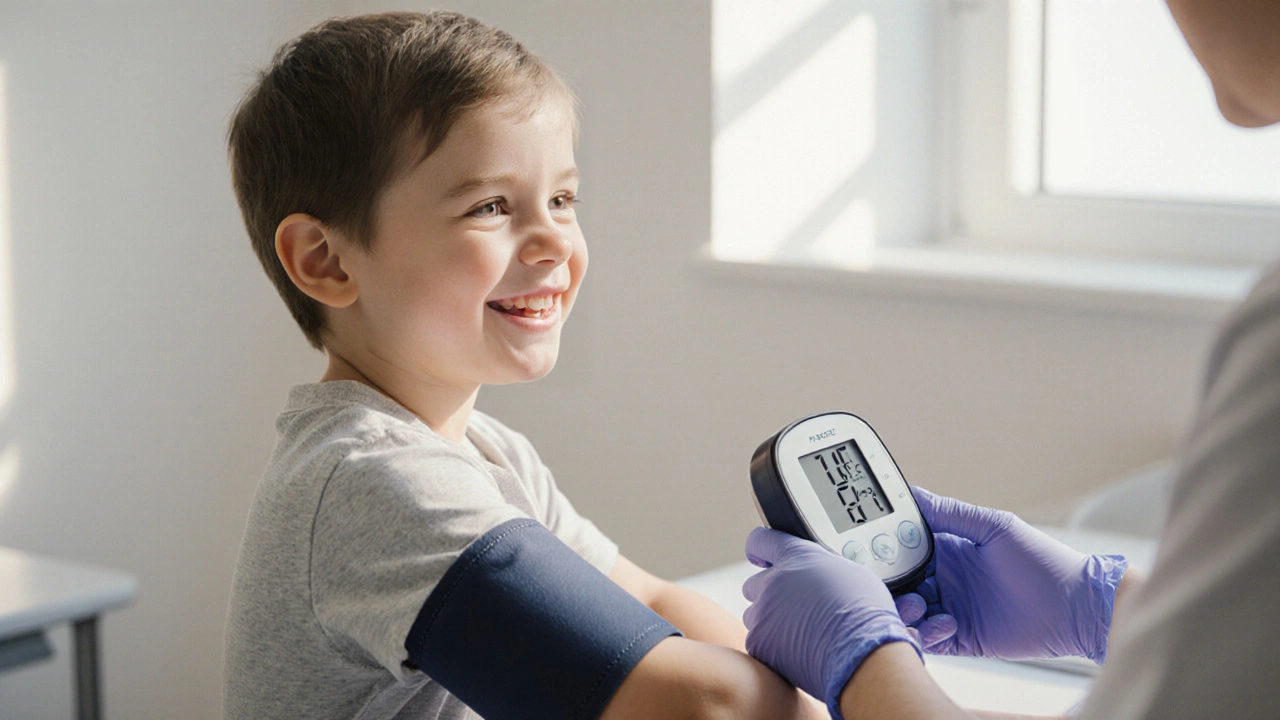Pediatric Hypertension: Understanding, Managing, and Monitoring
When dealing with pediatric hypertension, a condition where a child's blood pressure stays consistently above normal ranges. Also known as high blood pressure in children, it can signal underlying health issues and raises the risk of heart disease later in life.
Pediatric hypertension affects roughly 1‑2% of kids and often goes unnoticed because the symptoms are subtle. Doctors split it into two groups: primary (essential) hypertension, which mirrors adult patterns and is linked to obesity and family history, and secondary hypertension, which stems from another disease such as kidney problems, hormonal disorders, or heart defects. Spotting secondary causes early is crucial because treating the underlying issue can reverse the pressure rise.
Key Factors and Treatment Options
Accurate measurement is the first step. Kids need appropriately sized cuffs, and many families now use home blood pressure monitors that sync with smartphones. Consistent readings help doctors decide when lifestyle changes or medication are needed. Lifestyle basics—balanced diet, regular physical activity, limiting sugary drinks—can lower pressure by a few points and often delay the need for drugs.
When medication becomes necessary, clinicians choose from several classes. Calcium channel blocker, a drug class that relaxes blood vessel walls to lower pressure works well for kids whose vessels are overly tense. ACE inhibitor, medication that blocks an enzyme responsible for narrowing blood vessels is another first‑line option, especially when kidney involvement is present. Beta‑blockers, diuretics, and newer agents like angiotensin‑II receptor blockers round out the toolkit, each chosen based on the child’s age, weight, and co‑existing conditions.
One calcium channel blocker you might hear about is nimodipine, sold as Nimotop. While it’s primarily used for brain‑related issues, some pediatric specialists reference it when discussing the broader class of calcium‑channel agents. Articles comparing Nimotop to other antihypertensive drugs highlight how each medication’s side‑effect profile and dosing differ, giving parents a clearer picture of what to expect.
Kidney disease stands out as a leading cause of secondary pediatric hypertension. When the kidneys can’t filter fluid properly, blood volume climbs, pushing pressure up. Coordinated care involving a pediatric nephrologist, dietitian, and primary doctor often leads to better outcomes. Similarly, structural heart problems like coarctation of the aorta demand surgical or catheter‑based fixes before medication can fully control blood pressure.
In practice, doctors balance medication dosage with growth monitoring. Because children are still developing, doses are calculated per kilogram of body weight and adjusted regularly. Side‑effects such as fatigue, dizziness, or mild swelling are tracked, and families are coached to report any changes promptly.
Overall, managing pediatric hypertension is a team effort that blends accurate measurement, healthy habits, and carefully selected drugs. Below you’ll find a curated set of articles that dive deeper into specific medicines, lifestyle tweaks, and monitoring tools, giving you actionable insight for every stage of care.

